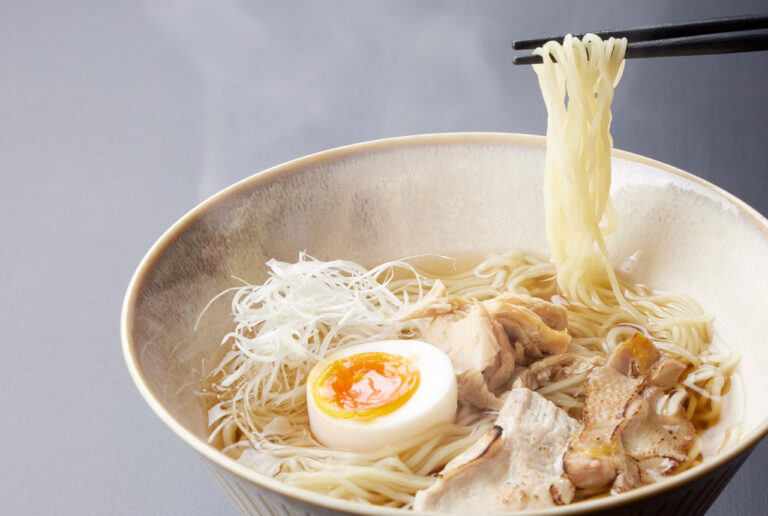
Found near Kinkakuji Temple in Kyoto! The luxurious use of domestic pheasant meat...


Toji-in Temple is located in Kita-ku, Kyoto City, about a 10-15 minute walk from Kinkakuji Temple and Ryoanji Temple. [Perhaps because it is slightly off the Kinukake-no-michi path that leads from Kinkakuji to Ryoanji and then to Ninnaji, there are relatively few worshippers, making it a wonderful place for a relaxing visit.
In this issue, we will show you the charms of Toji-in Temple!
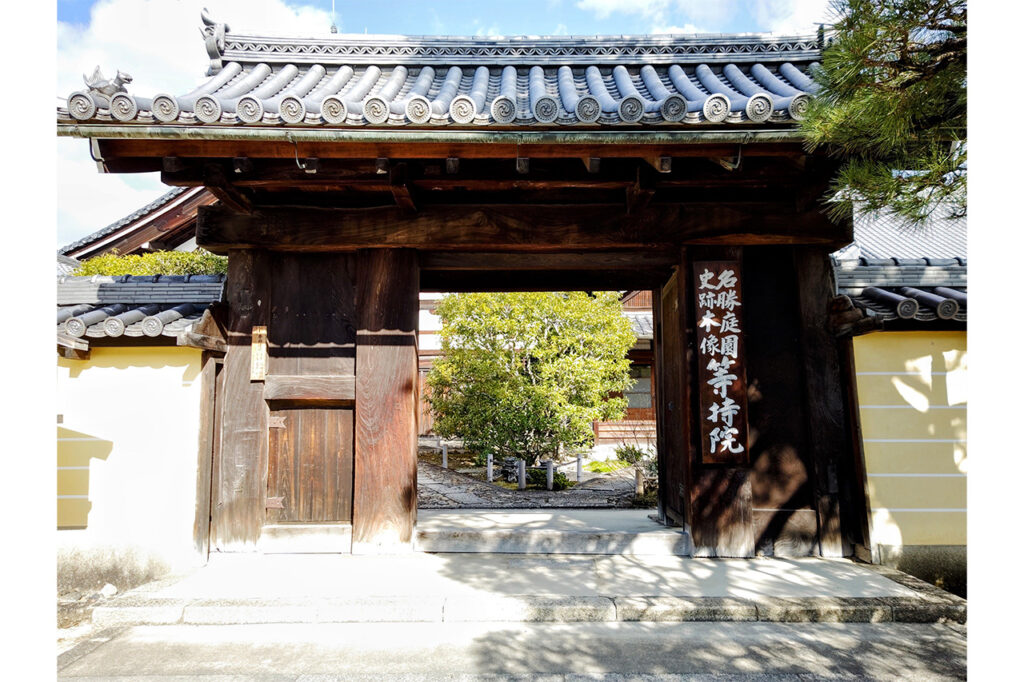

[Toji-in Temple was built in 1341 during the Muromachi period (1336-1573). Ashikaga Takauji founded the temple at its current location with Muso Kunishi as its founder.
There was a temple called Toji-ji Temple in the Muromachi Shogunate area, which was also called Kita Toji-ji Temple at first, but after the death of Takauji, it was named "Toji-in" after his Buddhist name. Since then, the temple has been a family temple of the Ashikaga shoguns.
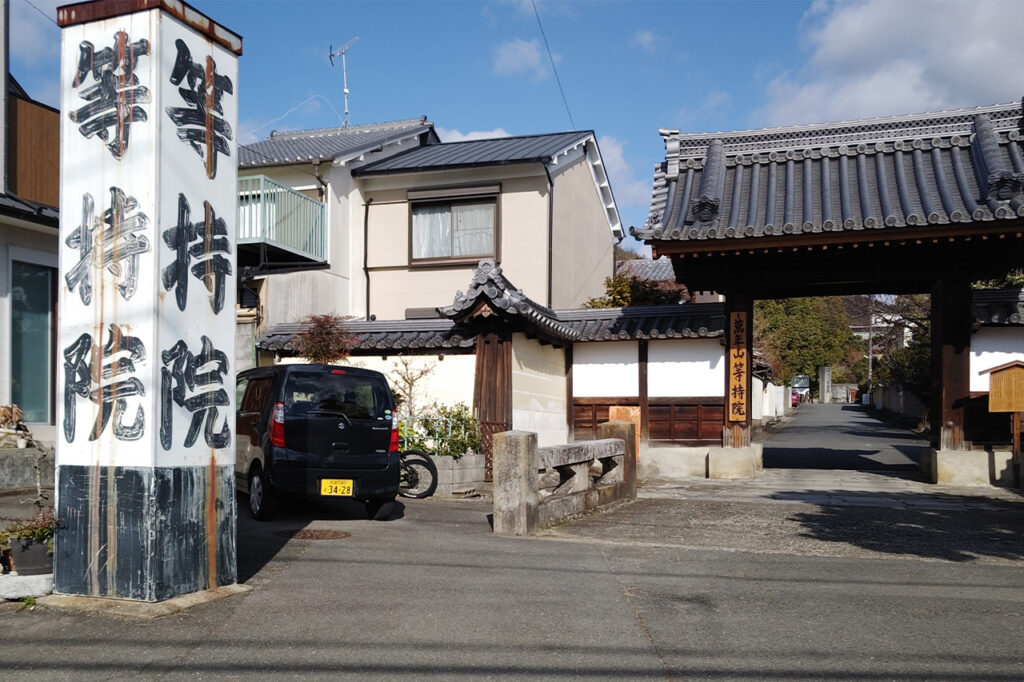

As you walk through a residential area toward the temple, you suddenly see a large signpost that reads "Toji-in Temple. Behind it, the main gate can be seen, but there is no building that looks like a temple.
In fact, the Toji-in building is located far back from the main gate.


Passing through the main gate and proceeding to the back, you will see a cemetery on the right and a statue of Shozo Makino in front of it.
The location where Toji-in Temple stands today is a very quiet place surrounded by residential areas and Ritsumeikan University. But from the Taisho era to the beginning of the Showa era (1926-1989), there was a movie studio there.
The studio was established by Shozo Makino, who is known as the "father of Japanese movies," and many movies were shot on location at Toji-in, which had a larger site than today. The Hojo (main hall), which will be introduced later, was also used as a filming location, but the building of the Hojo and the sliding door paintings were damaged during that time.
The sliding door paintings, by Kano Koi, have been restored and are now registered as a Tangible Cultural Property of Kyoto City.
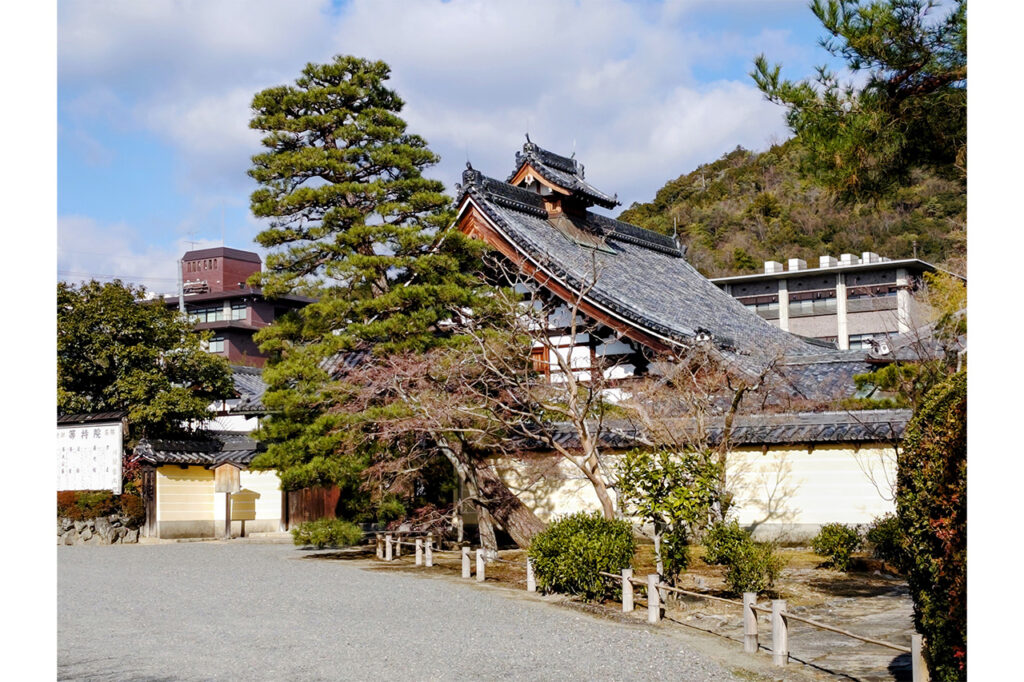

Further along the approach, you will see Mt. Kinugasa and the school building of Ritsumeikan University in the background, and the korori (the back porch) of Toji-in Temple. Passing through the gate, I was greeted by lovely flowers of Kinmokusei and sasanqua and a demon tile.
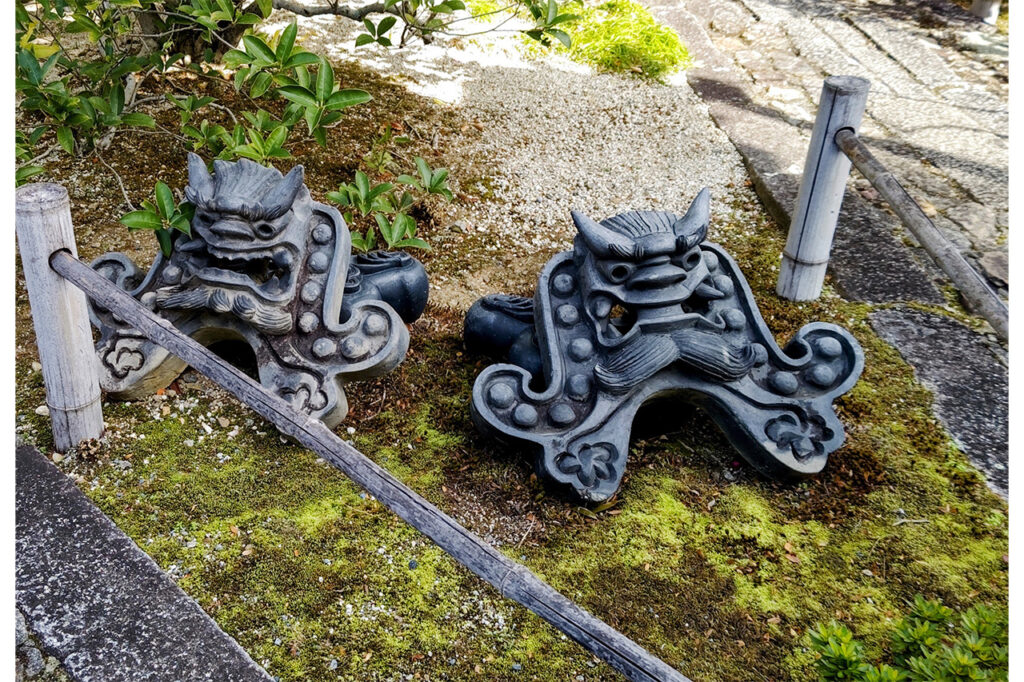

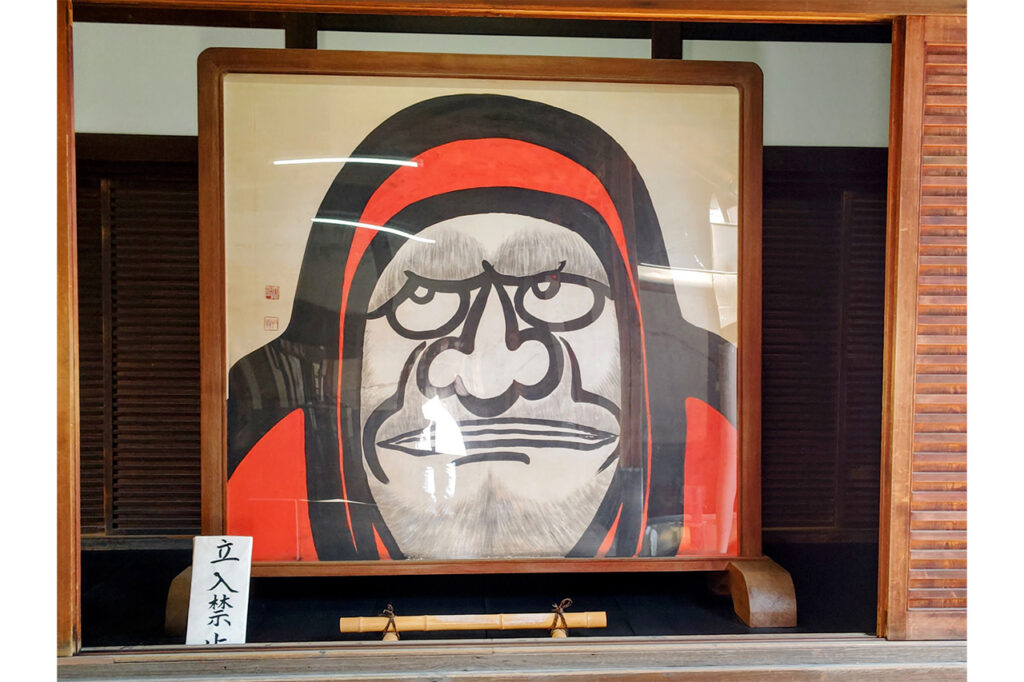

The first thing that stands out at the beginning of the tour route is a large painting of Daruma, the founder of Zen Buddhism, by Seki Mokuo Roshi, former president of the Tenryuji School of Buddhism. The painting, by Mokuo Seki, former chief abbot of the Tenryuji School, depicts the founder of Zen Buddhism, Daruma Daishi.
The hojo was originally built in 1616 by Masanori Fukushima at Kaifukuin, the pagoda of Myoshinji Temple, and was relocated to this building. There is a large porch on the south side and a karesansui garden in front of it.
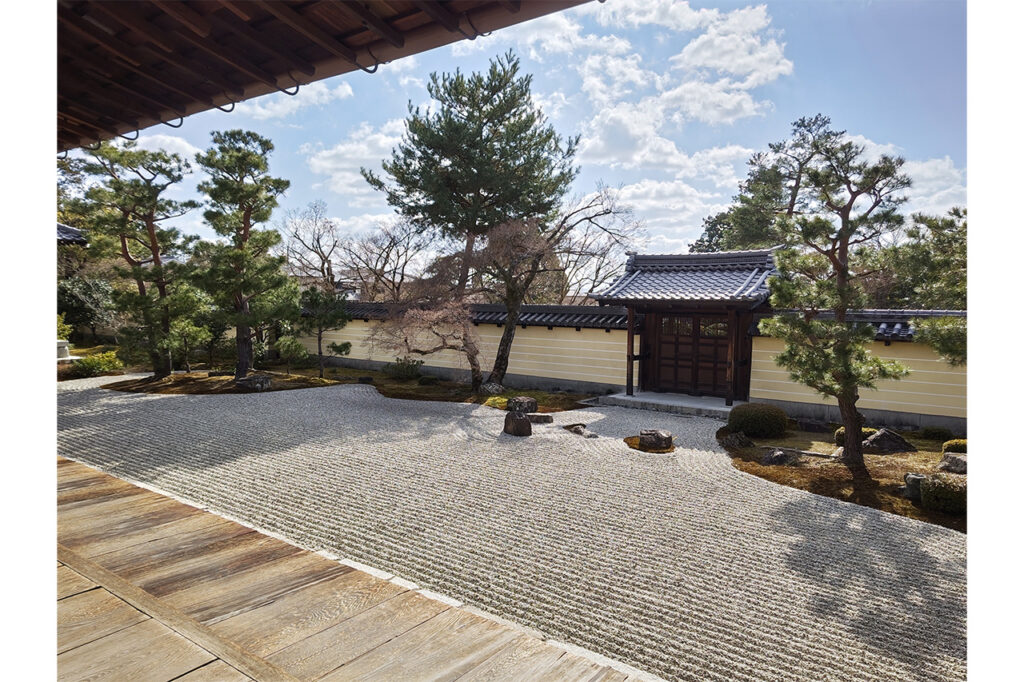

The nightingale flooring on the porch made a pleasant "squeak-squeak" sound as I walked around! A closer look at the veranda reveals inlaid butterflies and flowers.
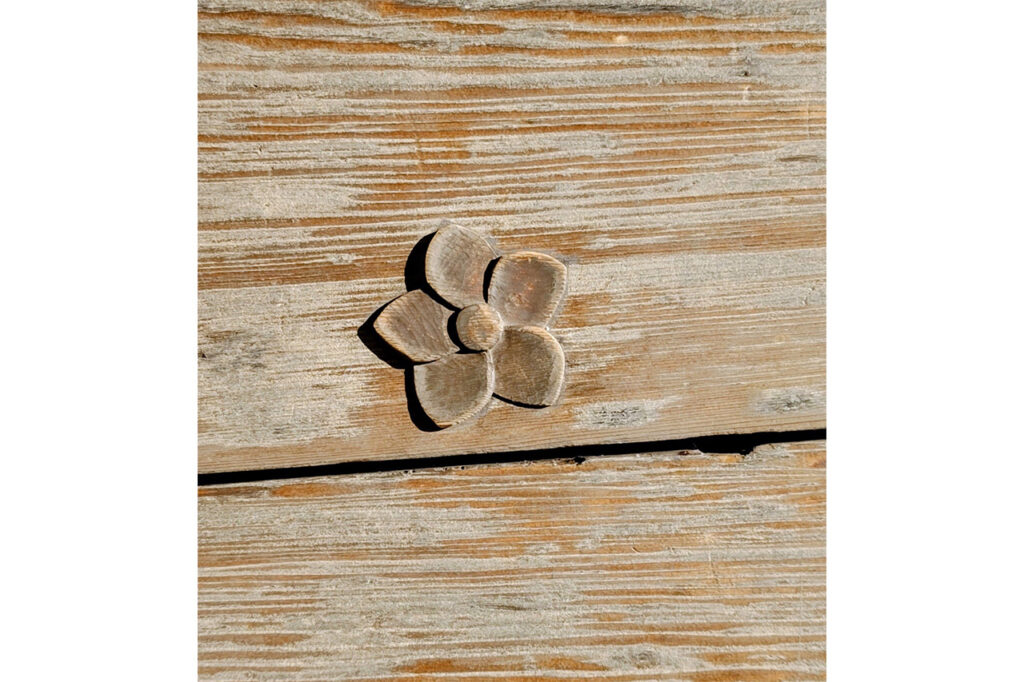

Motegi is a restoration method in which a damaged portion of flooring material is cut out and another piece of wood is inserted, but the design of this method, in which it dares to emerge as a pattern, is wonderful.
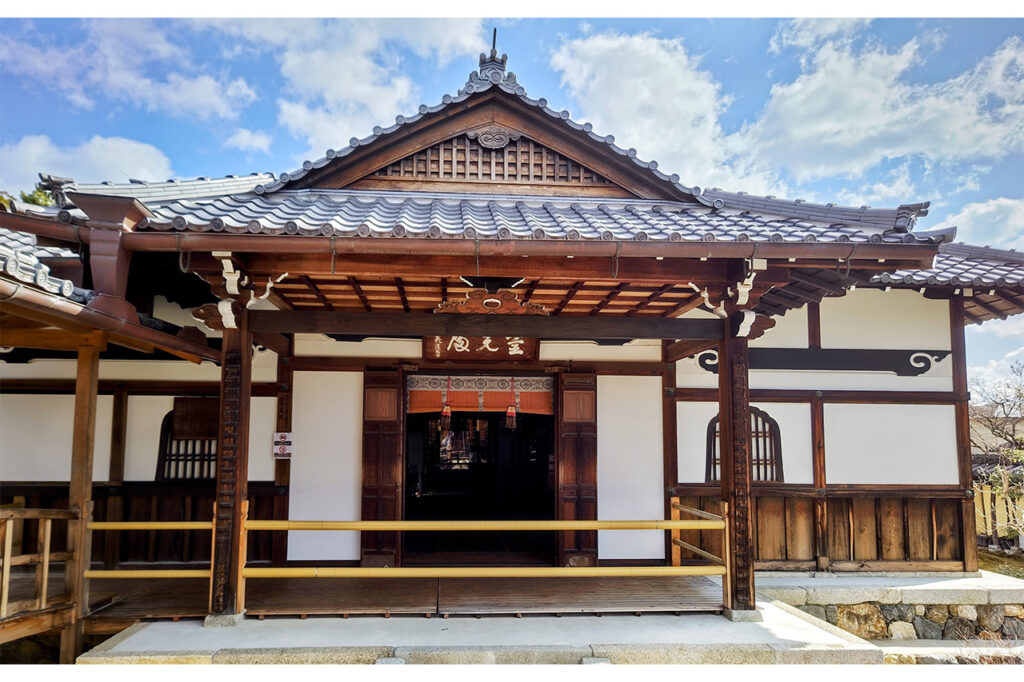

At the rear of the Hojo is Reikouden, which houses wooden statues of the fifteen Ashikaga shoguns (excluding the fifth and fourteenth). The generals lined up in a row on both sides of the hall are a spectacular sight! It is fun to look at their faces carefully, starting with Takauji, as each has its own unique characteristics. Yoshimitsu is very energetic, Yoshimasa looks nervous, and Takauji looks unexpectedly cute.
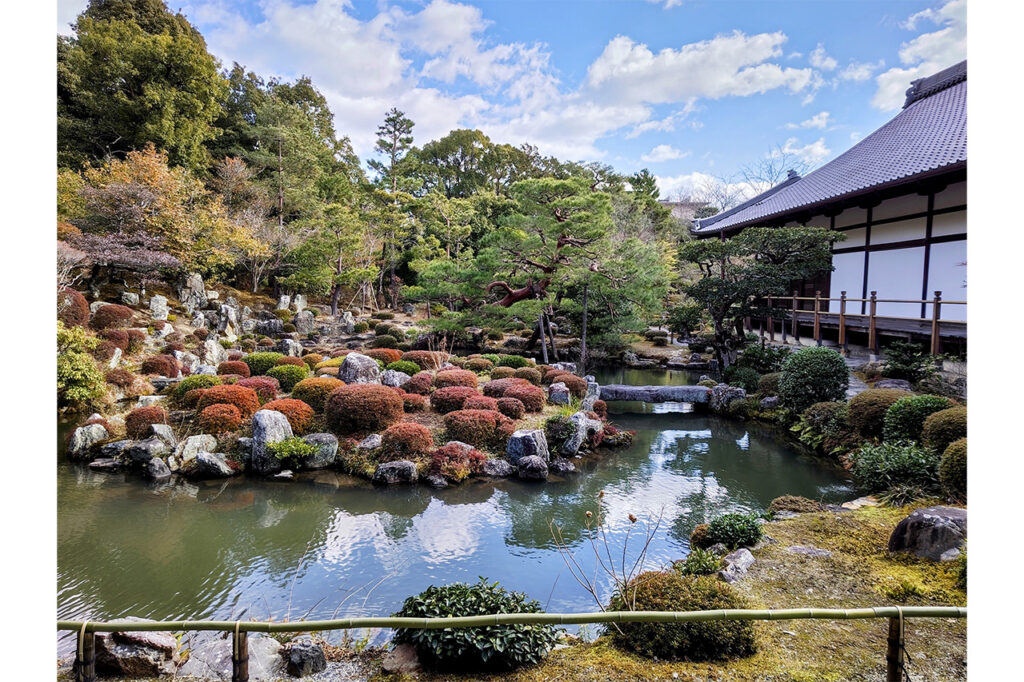

Just behind the Hojo is the Fuyo-ike Garden, a pond garden with a circular garden style that is said to have been created by Soseki Muso. This garden can be walked around.
The garden is centered around Fuyo-ike Pond, which imitates lotus flowers, and Shinji-ike Pond, which imitates the character for "heart" in cursive script, and includes Hokyoin-to, a memorial tower for Takauji, and Seiren-tei, a tea house.
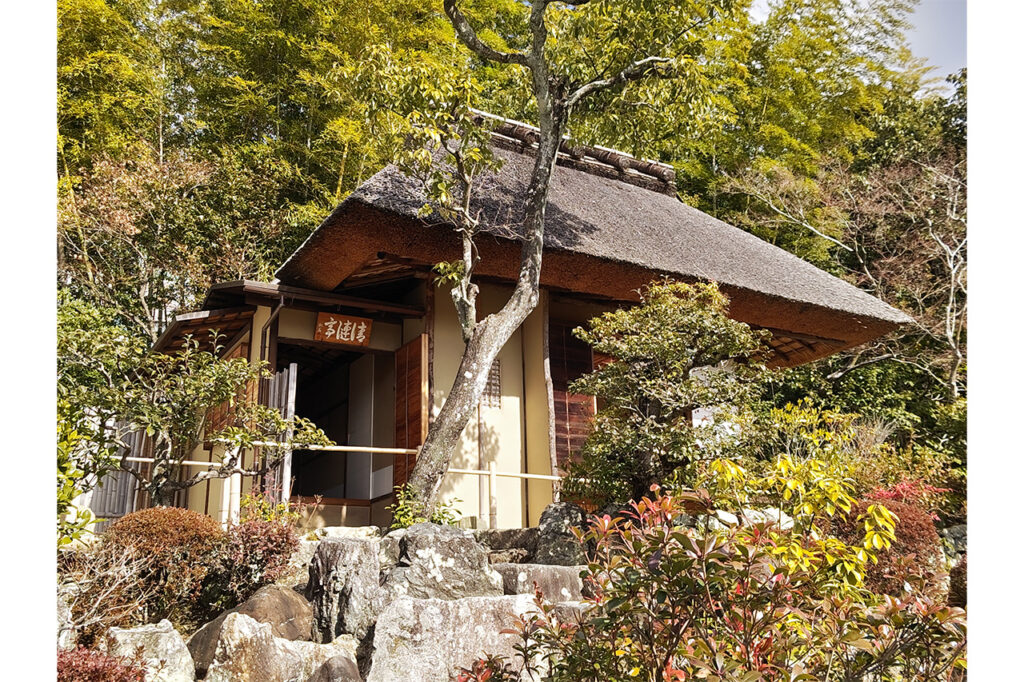

At the time of my visit, sasanquas and camellias were in bloom, but from mid-February onward, the garden is beautifully decorated with fallen camellias.
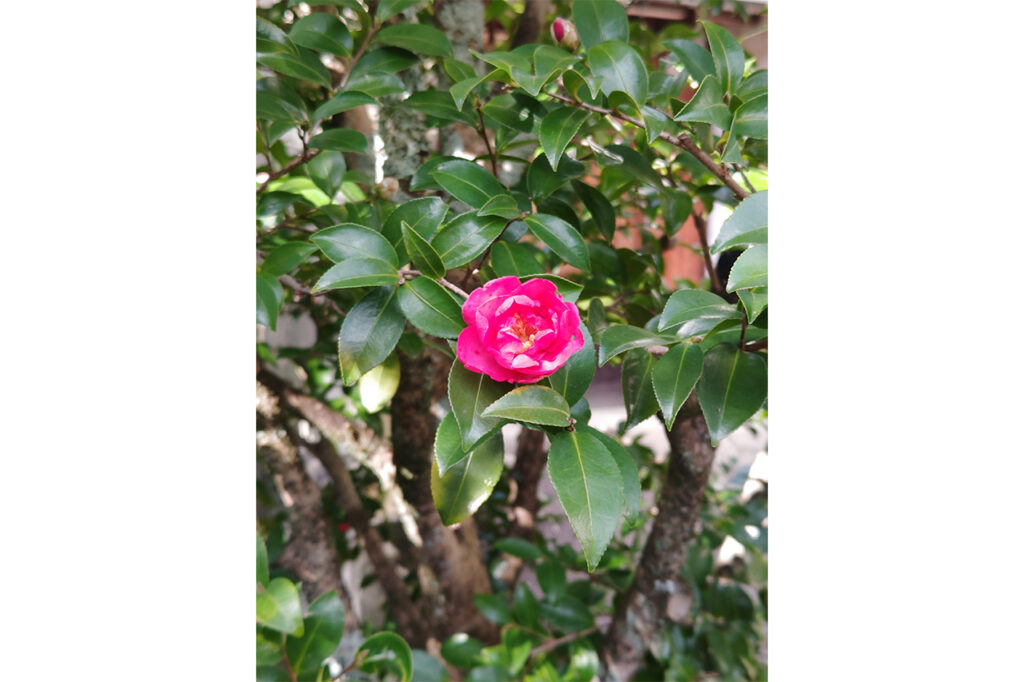

As spring approaches, the garden changes its appearance one by one, with blossoms of jyukuri (tree of the valley), azaleas, azaleas, and magnolias; in early summer, azaleas, azaleas, and fresh greenery; and by the time summer arrives, bellflowers, Japanese honeysuckle, and sarusuberi (monkey slippers) are in full bloom.
In the fall, the area is transformed into a stunning landscape of autumn leaves! Of course, the snowy winter scenery is not to be missed.
You can also enjoy the view while sipping matcha tea in the shoin-style room facing the garden. (600 yen with sweets).
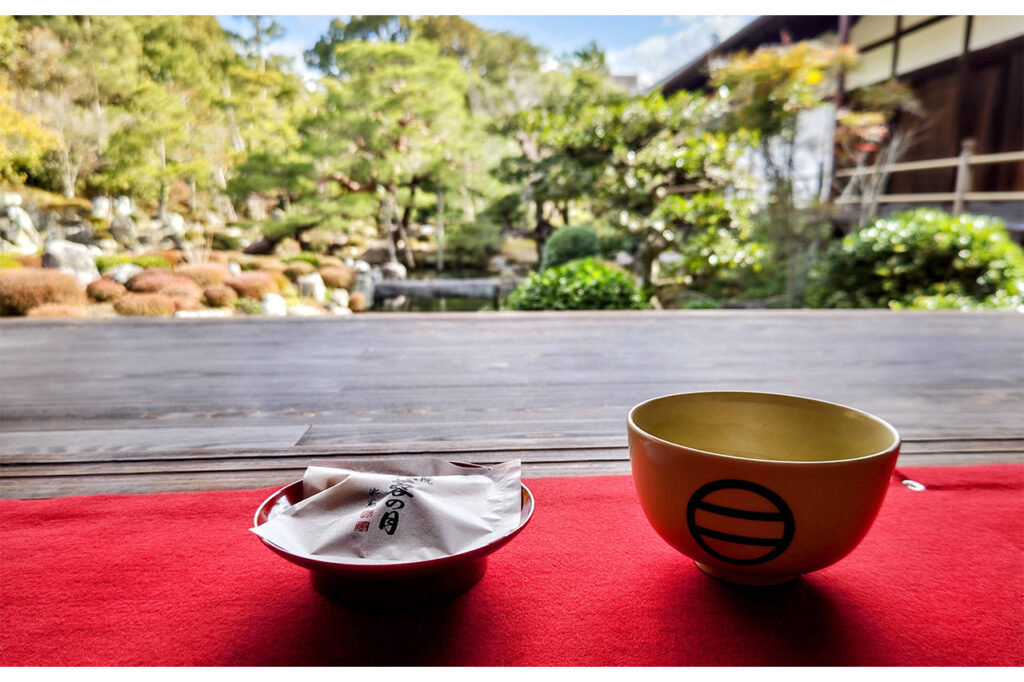

The winter scenery I visited this time was wonderful, but I would like to see the garden in spring and summer, when the colors of the season are more vibrant, and also in the autumn foliage. I wonder how many times I will visit Toji-in in the future. I am very much looking forward to it!
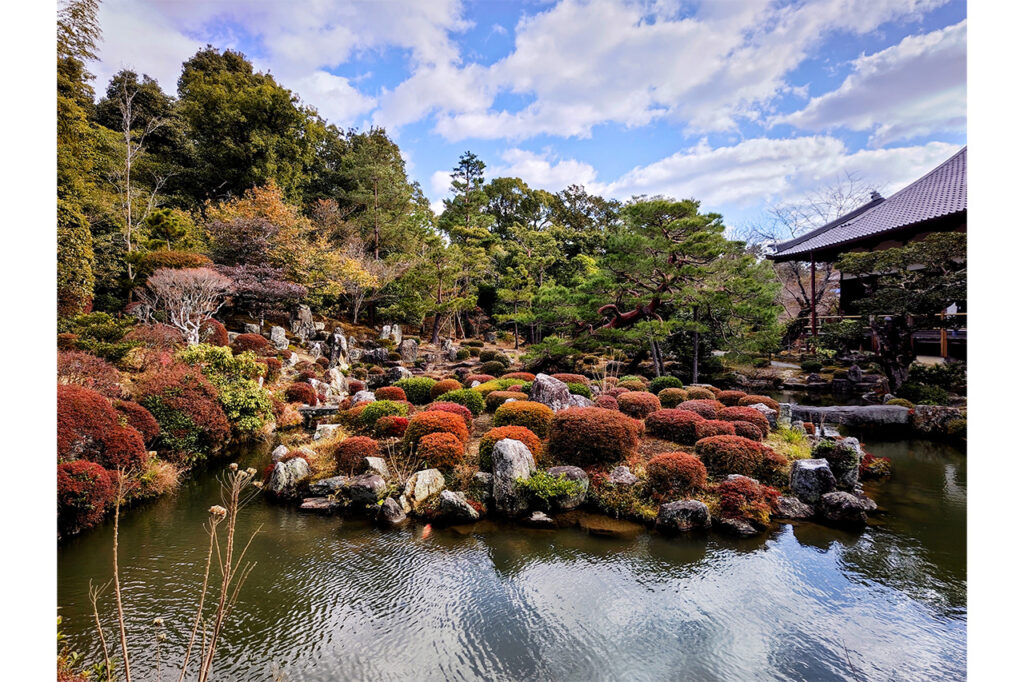

Over 600 interviews per year! An order site carefully selected by the editors who knows Kyoto and Shiga.
nowOfficial LINE friend registration500 yen OFF coupon is being issued!
Distributed every Friday morning at 8:00 am! From new restaurant information to event information that we want to share with you, We deliver articles about Kyoto that are useful to know. About 20,000 people have registered.Click here to add a friend!
 News
News Feature article
Feature article Featured event
Featured event